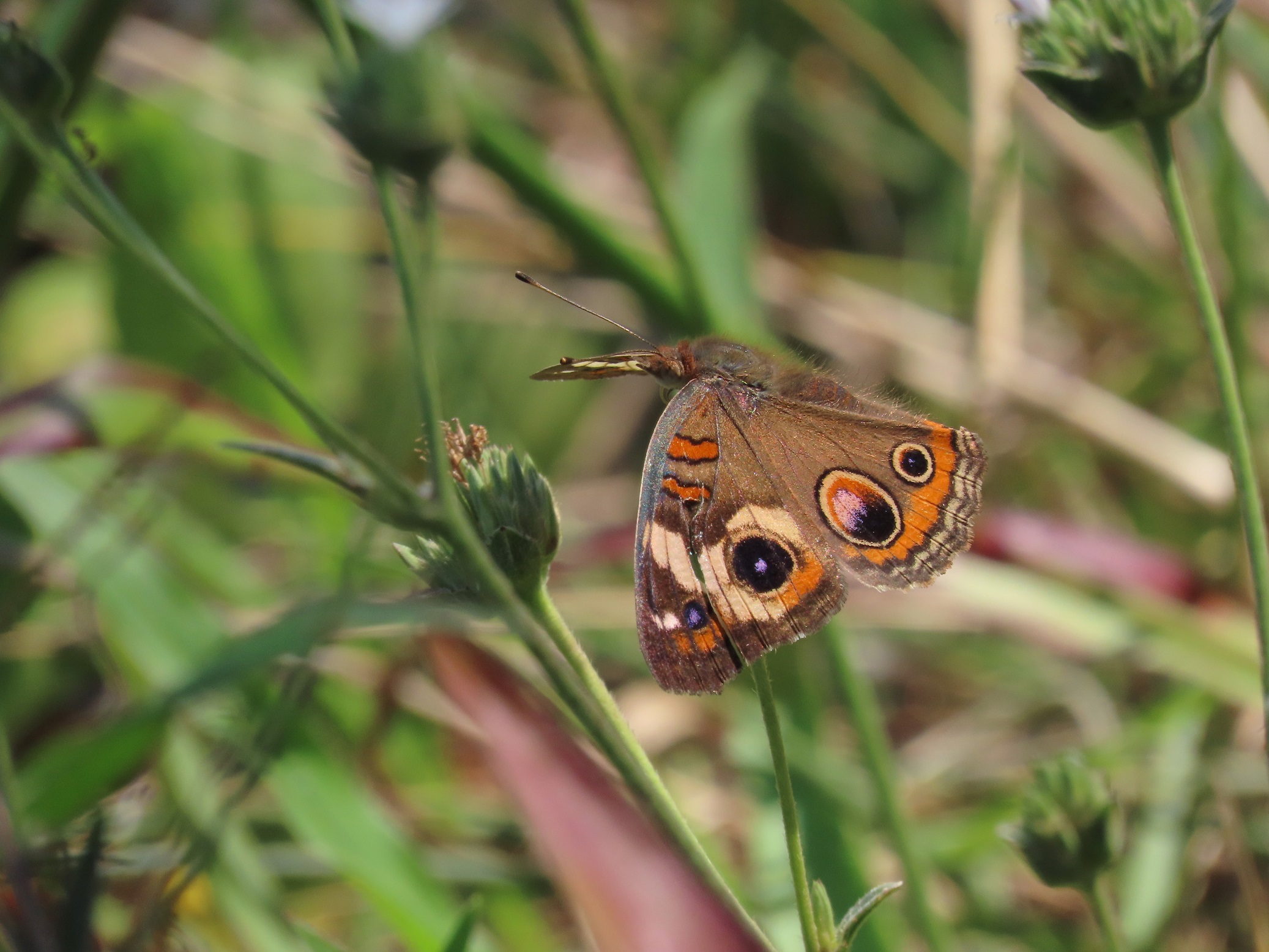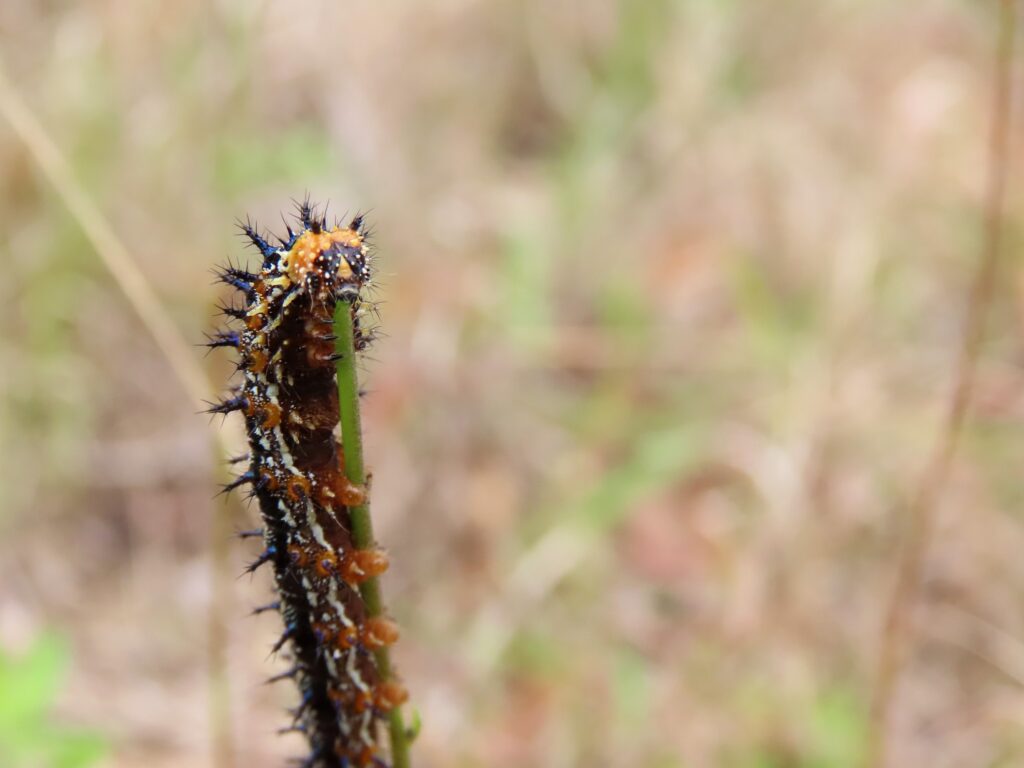


This week for Flora and Fauna Friday we have a common but striking butterfly found in grasslands and fields, the Common Buckeye (Junonia coenia).
The Common Buckeye is a populous butterfly found throughout the eastern and southwestern United States. Here in the Lowcountry it can be found practically year round, with some adults overwintering and sporadically appearing during warm spells in the dead of winter. However, they are most abundant from April through November. The Common Buckeye is a thoroughly medium-sized butterfly, hovering around two-inches wide with its wings spread. The underside of its wings are a soft, pale tan with washed-out streaks and smears of brick-red, tangerine-orange, charcoal-black, and eggshell-white and one prominent black eyespot on the upper wing. The upper-side of the wing is far more striking. A rich walnut-brown is punctuated with eight glaring eyespots composed of concentric rings of black and tan circling in on a black core with a piercing iridescent sky-blue pupil. Four of these spots are large and prominent and the other four small and reduced. These walnut wings are also accented with bars and fringes of that same tangerine-orange and a puddle of eggshell-white engulfing the upper large eyespots. The adults who emerge in late fall and early spring have a smaller stature and a rosy, brick-red wash to their lower wings. These are referred to as the “Rosa” morph and, in my opinion, are even more striking.
Common Buckeyes are most often found in open grasslands, field edges, roadsides, weedy lawns, and other open grassy areas all throughout South Carolina. Adults can readily be spotted low to the ground, jerkily flying with sharp wingbeats, just atop the vegetation. Their larvae feed on several common species of wildflower, most notably Canada Toadflax (Nuttallanthus canadensis), Carolina Wild Petunia (Ruellia caroliniensis), Plantains (Plantago spp.), and False Foxgloves (Agalinus spp.). These plant species are all extremely common in open areas across the state, especially old fields and roadsides, which is the big reason why Common Buckeyes are as prolific as they are. The caterpillars of Common Buckeye are also quite striking. At full size their larvae reach about an inch-and-a-half in length. They’re bathed from nape to nethers in a deep ink-black but accented to the nines with all manner of other colors and adornments. Their back and flanks are streaked with tattered stripes of pastel-yellow and their head and feet washed in tangerine-orange. Their skin is puckered with nearly microscopic warts and, more strikingly, crowned with five rows of jagged thorns. The thorns on their flanks have an orange base and those thorns on their back have a girdle of iridescent indigo. Here on Edisto Island, Common Buckeye caterpillars are most easily found on Purple False-Foxglove (A. purpurea) in mid-summer. Generally, if you find a clump of these wildflowers in bloom, you’ll like find a half-dozen Common Buckeye caterpillars clinging to them.